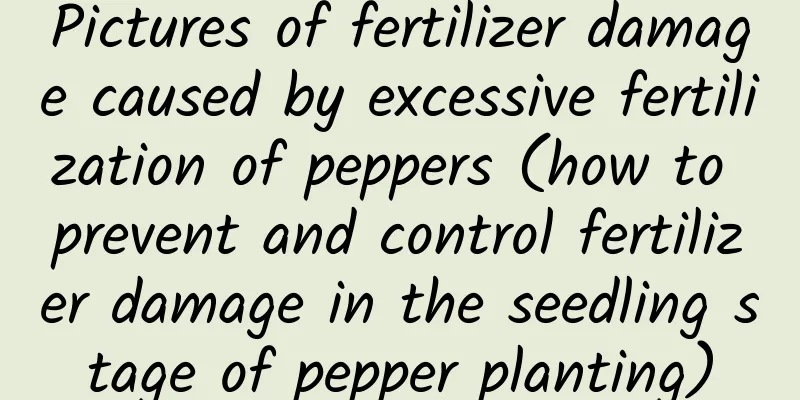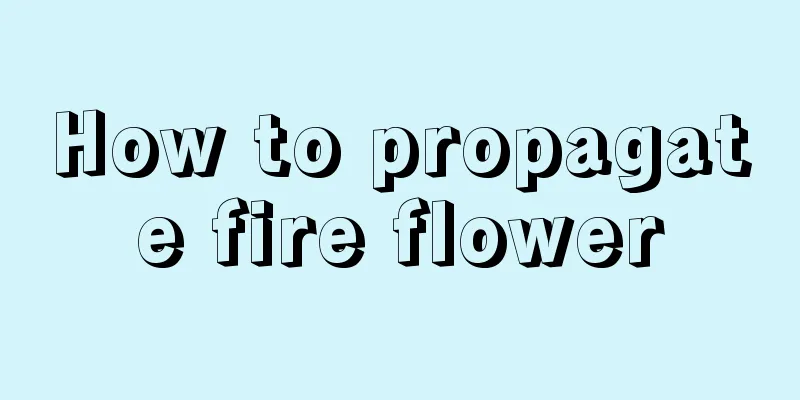Pictures of fertilizer damage caused by excessive fertilization of peppers (how to prevent and control fertilizer damage in the seedling stage of pepper planting)

|
Peppers are widely used in diet. Many growers spray some foliar fertilizers in the process of growing peppers, which has a very good effect on increasing the yield of peppers. However, if scientific fertilization is not carried out during this process, it will easily lead to fertilizer damage to peppers. The generation of fertilizer damage is not only not conducive to the growth of peppers, but may also cause them to wither and die. Causes of pepper fertilizer damage
The main reason for fertilizer damage to peppers is that the amount of fertilizer used is not scientifically and reasonably used. The amount of fertilizer used at one time is too large, which exceeds the range that peppers can bear. This will cause damage to the root system of the pepper and reduce its absorption function. Once it is reduced, it will easily affect the growth of the leaves and the absorption of nutrients, thus causing fertilizer damage. Fertilizer damage to peppers is a huge waste of the peppers themselves, which will affect their normal growth and also lead to a decrease in yield and quality. Therefore, it is necessary to prevent and control the disease in time and in advance. Spraying too much pepper fertilizer will cause the leaves to turn white locally, or some grayish white spots, and the more serious the disease develops, the larger the spots will become.
If you put the farmyard manure in the field where you plant peppers for seedling cultivation before it is fully decomposed, the pepper seedlings will suffer from severe shortage and root rot.
In severe drought, it is very easy to cause fertilizer damage to peppers if you start using fertilizer without diluting it with water.
When growing peppers, many farmers use too much single fertilizer, especially nitrogen fertilizer, in order to increase the growth of pepper seedlings. The most obvious symptom is the appearance of green moss in the root area of the peppers. Prevention and control of pepper fertilizer damage1. Spray water to dilute fertilizerIf this symptom occurs, be sure to spray clean water immediately. Spray some water on the front and back of the leaves appropriately . This can dilute the fertilizer and help reduce root damage. 2. Timely root irrigationTo do a good job of irrigation, the roots of most vegetables are relatively active. When fertilizer damage occurs, timely root irrigation can promote the roots to absorb sufficient water. This can dilute the concentration of fertilizer in the soil, prevent the disease from getting worse, and alleviate the symptoms of fertilizer damage. 3. Spray plant nutrient solution to enhance immunityWhen symptoms of fertilizer damage appear, you can also spray plant nutrient immunity solution, which can enhance the resistance of the pepper plant itself. Generally speaking, fertilizer damage can be eliminated after two or three waterings, and spraying immunity night at the same time can improve the pepper's own resistance to fertilizer damage. 4. Dig holes and fill water before fertilizingWhen the weather is dry, before applying fertilizer, first dig a small hole about ten centimeters away from the root of the pepper. Then pour water into the hole, wait for the water to penetrate the soil, then apply fertilizer, and then cover the fertilizer, which can better prevent the occurrence of fertilizer damage. 5. Choose the right time to fertilizeIf you want to use nitrogen fertilizer, you should pay attention to the characteristics of nitrogen fertilizer. Because nitrogen fertilizer is relatively volatile, the time of fertilization can be changed to around three o'clock in the afternoon . This can prevent the ammonia produced during the volatilization process of nitrogen fertilizer from affecting the leaves of peppers. ConclusionPeppers will encounter many diseases during the planting process, and some of these diseases are caused by improper artificial planting techniques, especially fertilizer damage. Therefore, before planting, you must first understand the scientific method of planting. If a disease occurs during the planting process, don't be anxious. Timely prevention and control of diseases, and strengthening field management at the same time, can more scientifically grow high-quality peppers with high yields. |
<<: Causes and prevention measures of cucumber deformed fruits (Causes of cucumber deformed fruits)
Recommend
What is the best fertilizer for rosemary?
Rosemary fertilization time Rosemary can be ferti...
What fertilizer is good for asparagus base fertilizer? Key points for base fertilizer application
Asparagus base fertilizer effect Applying suffici...
How to cultivate red vine
1. Soil To grow the red vine, you need fertile, w...
Can orchids be planted in the ground?
Can orchids be planted in the ground? Orchids can...
How often should I water the Lotus Lantern?
How often should I water the Lotus Lantern? Gener...
What kind of fertilizer is good for pumpkin base fertilizer (base fertilizer application method)
Pumpkin base fertilizer effect When planting pump...
The value of Michelia sempervivum
The ornamental value of Michelia sempervivum Ther...
What to do if the color of succulents turns dark in winter
Different types of meat may darken, which is a si...
How to treat yellow leaves of mulberry peony
1. Supplement sunlight It cannot tolerate shade. ...
What is the best month to plant hornwort?
When to plant radish The planting time of iris is...
Three taboos for growing flowers at home
1. Avoid growing too many flowers with strong fra...
How to prune pink palm
When to prune the pink palm Generally, the pink a...
Key points for apple tree management in November
Apple orchard management is not only critical in ...
What should I do if Schefflera affine leaves fall in winter? Why does it fall?
1. Increase the temperature 1. Reason: Schefflera...
How to keep baby's breath in winter
1. Suitable temperature Gypsophila paniculata is ...









